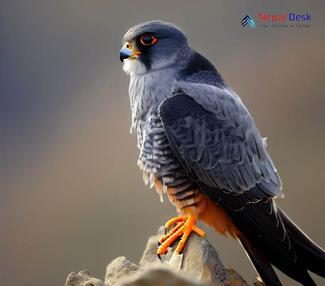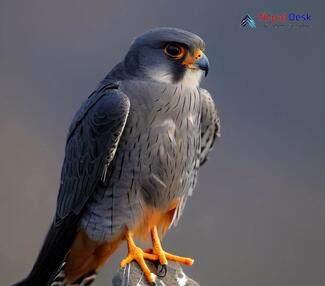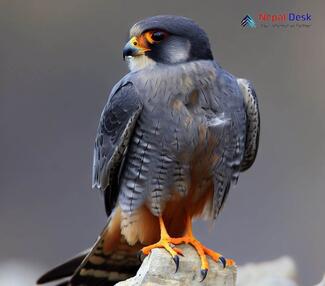The Amur Falcon, a small bird of prey, exhibits fascinating breeding behavior. Male members of this species gather in large groups during the breeding season and carry out intricate aerial stunts to draw the attention of females. Recognized for their remarkable flying prowess, these falcons can travel vast distances in a single flight. Migrating from northeastern Asia's breeding grounds to southern Africa's wintering grounds, they cover over 20,000 kilometers.
Serving as crucial predators of insects and small birds, Amur Falcons help maintain the equilibrium of their ecosystem. While males are characterized by their grey head, black back, and rufous underparts, females display a brown head and back with a streaked breasts. They have slender bodies and pointed wings with a length between 30 and 35 centimeters.
The global range of Amur Falcons spans eastern Russia, China, and North Korea during the breeding season and southern Africa for wintering. They have experienced habitat loss and hunting threats during migration, leading to a population decline in recent years. However, thanks to conservation initiatives, the species is gradually recovering.
Amur Falcons are deemed rare passage migrants in Nepal and appear in limited numbers during migration. They inhabit open ecosystems such as grasslands and cultivated regions where they can be seen roosting en masse among tree branches. The ideal time for sighting them in Nepal is from September to November and February to April.
With an annual migratory distance of up to 22,000 kilometers, these falcons are noted for their swift flying capabilities as they catch insects mid-flight. Males stake out territory and engage in aerial performances to attract mates; nesting occurs on tree branches, bushes, or cliff ledges.
Insects such as dragonflies, locusts, and grasshoppers make up most of the Amur Falcon's diet. During migration season flying ants and termites are included in their meals along with occasional small birds. Juvenile falcons differ in appearance from adults, showcasing brown upperparts and streaked underparts. The Eurasian Hobby and the Red-footed Falcon bear resemblance to the Amur Falcon.
In Nepal, prime spotting opportunities occur from September to November in open grasslands and fields near water sources like rivers and lakes. Koshi Tappu Wildlife Reserve and Chitwan National Park house the species within their protected areas.
Males exhibit a blue-grey head, back, and upper wings along with a chestnut belly, whereas females are characterized by their brown head, back, and striped belly. The Amur Falcon can be distinguished from similar species such as the Red-footed Falcon and Eurasian Hobby by their unique plumage patterns.
The IUCN Red List currently classifies the Amur Falcon as "Least Concern," which denotes that they are not facing extinction risk. However, ongoing conservation measures remain vital to preserving their habitats and promoting continued survival. In Nepal, they are considered rare migrants found beside wetlands, river banks, and agricultural fields.




